Many people visit just for the UNESCO-listed Mayan ruins of the same name. Apart from this, Palenque is also the place for a variety of jungle experiences. Close to the border with Guatemala, Mexico is at its most verdant and wild here and the waterfalls are top-tier.
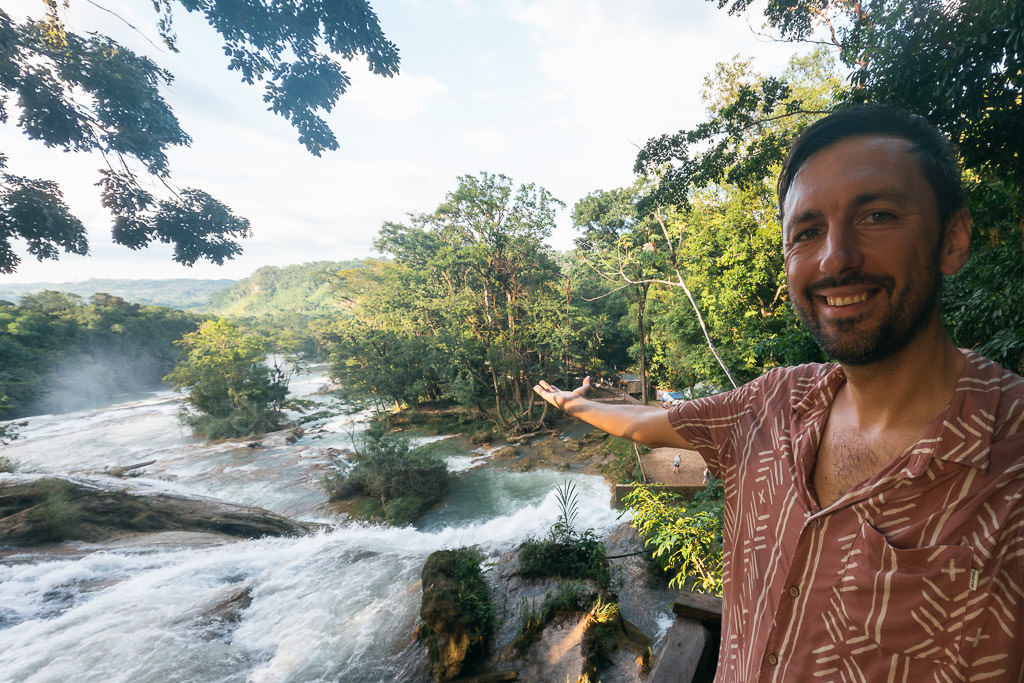
This Palenque travel guide is based on two visits; I once stayed for 2 nights just to see the ruins, before staying another 5 nights several years later to truly see and do everything there is in Palenque.
Some important things to know:
- There is currently NO operational airport in Palenque. There haven’t been flights there for a while now! Villahermosa has the closest airport.
- Unlike other blogs, I do NOT recommend taking tours from Palenque to San Cristobal or other sights in southern Chiapas. It’s simply too far and the experience will not be great. I’ll explain some better options here.
- As of 2023 (and continuing in 2024), Yaxchilan is not accessible. Some companies still advertise tours to the more hidden Mayan ruins of Yaxchilan, but they’ll take you to other sights without actually informing you. I’ll describe an alternative experience to Yaxchilan further below.
- It makes quite a big difference if you stay inside the town or near the ruins (they’re a 20-minute drive apart). Be sure to check my hotel tips before you book.
I’m calling this the not-your-usual travel guide to Palenque because I have actually researched everything first-hand — and I’m including some more specific tips to help you better plan your stay!
Alrighty, let’s dig in.
Is Palenque worth visiting?
In short: yes, Palenque is an incredible destination with some of the best Mayan ruins and tropical waterfalls that Mexico has to offer.
Here’s what to expect…
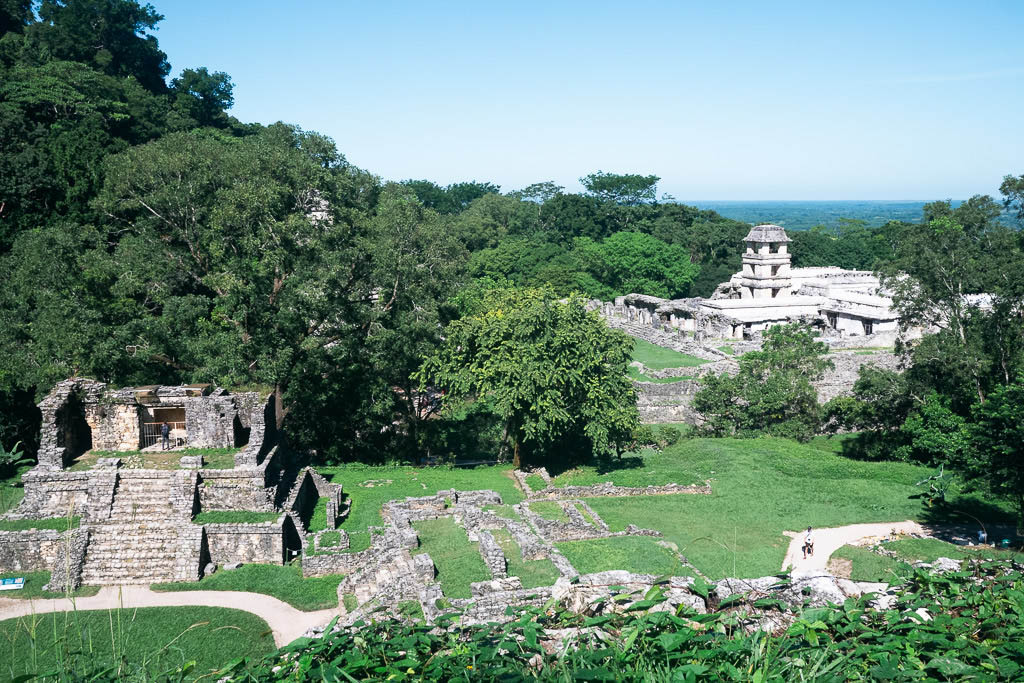
The archeological site is impressive and it alone is worth coming here for. It’s somewhat smaller than the better-known Chichén Itzá, but personally, I enjoy exploring Palenque more thanks to its scenic location and partially overgrown structures. It’s an epic site that’s bested only by some of the Mayan sites in Guatemala such as Tikal.
Just to set your expectations, the town itself lacks the incredible charm of, say, San Cristobal de las Casas. Palenque feels more like an outpost from which to take excursions into the region, which are the real reasons to visit.
It’s still a fairly nice town, though. Below are some photos for an idea.
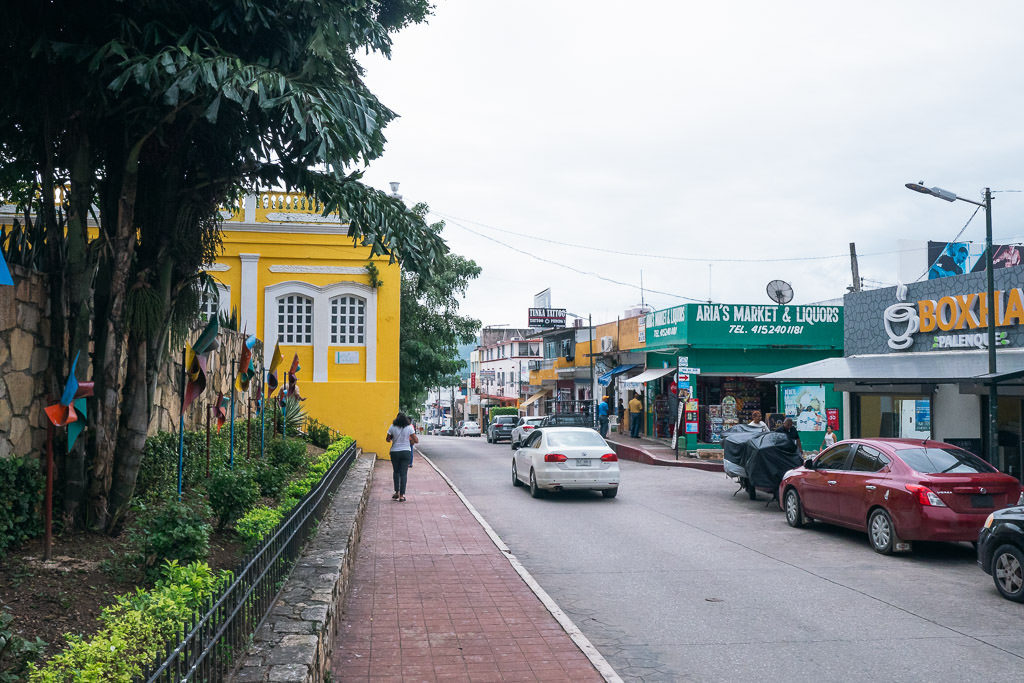
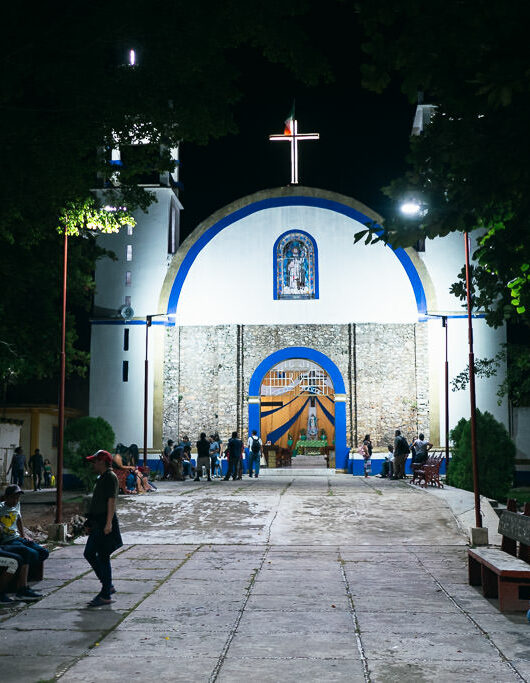
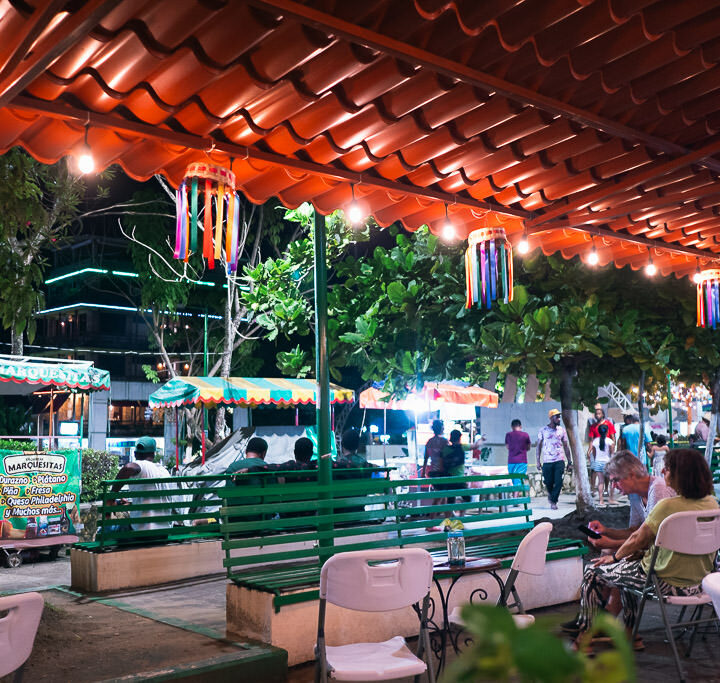
Some travelers stay on a quick 1-night stopover only to see the Palenque archeological site, which is a valid option if you’re strapped for time. There is also enough to justify a 4-night stay if you have time to spare.
Whether you’re traveling in the Yucatan Peninsula and considering stretching your route to Palenque, or you’re coming from the direction of Oaxaca or San Cristobal, it’s definitely worth adding Palenque to your Mexico travel route.
2 Best Palenque tours
Having done almost all activities in Palenque, I can recommend two tours in particular that I think anyone will find highly worthwhile.
You could do some elements of these tours by yourself, though this is less practical and more time-consuming. In the case of the Lacandon tribes, there is actually no public transport heading in this direction, so a tour is the best way to do it.
1. Agua Azul & Misol-Ha Waterfalls
BEST FOR HIGHLIGHTS
This half-day experience offers the most convenient way to see some of the best highlights around Palenque.
You’ll visit two stunning waterfalls. Misol-Ha is a lot more vertical and you can actually walk behind it, which is really cool! Agua Azul is a much more horizontal waterfall with numerous leveled cascades and good swimming areas (particularly towards the top… just keep going up if you can’t find a good spot).
You can book this on GetYourGuide or on Viator.
Other tours combine the waterfalls with the Palenque ruins. This is a solid option if you want to tick everything off the list in one day.
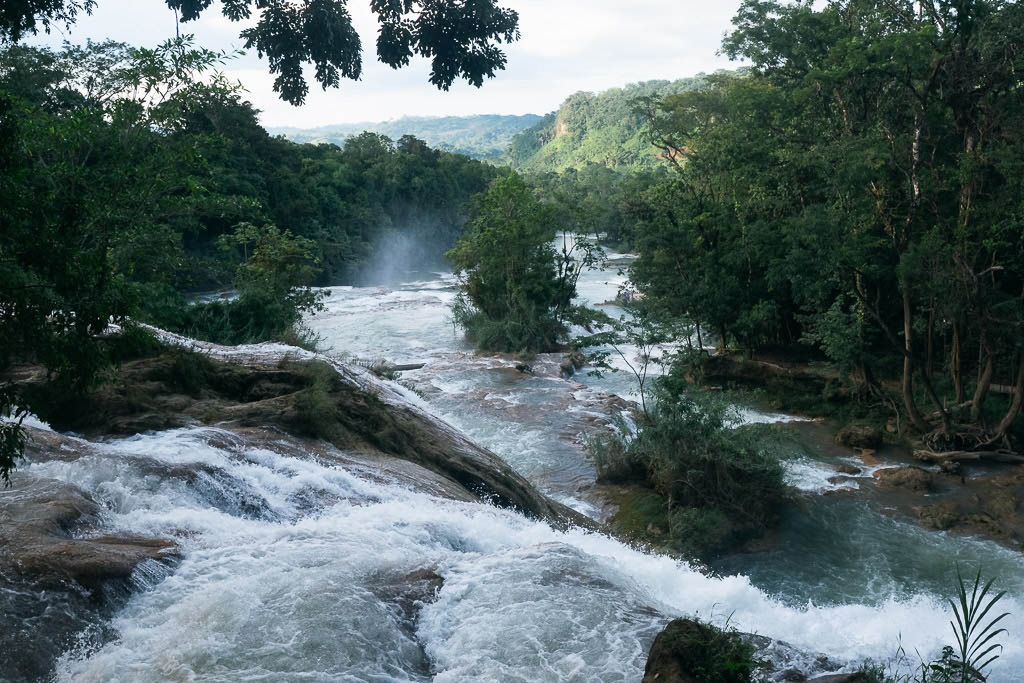
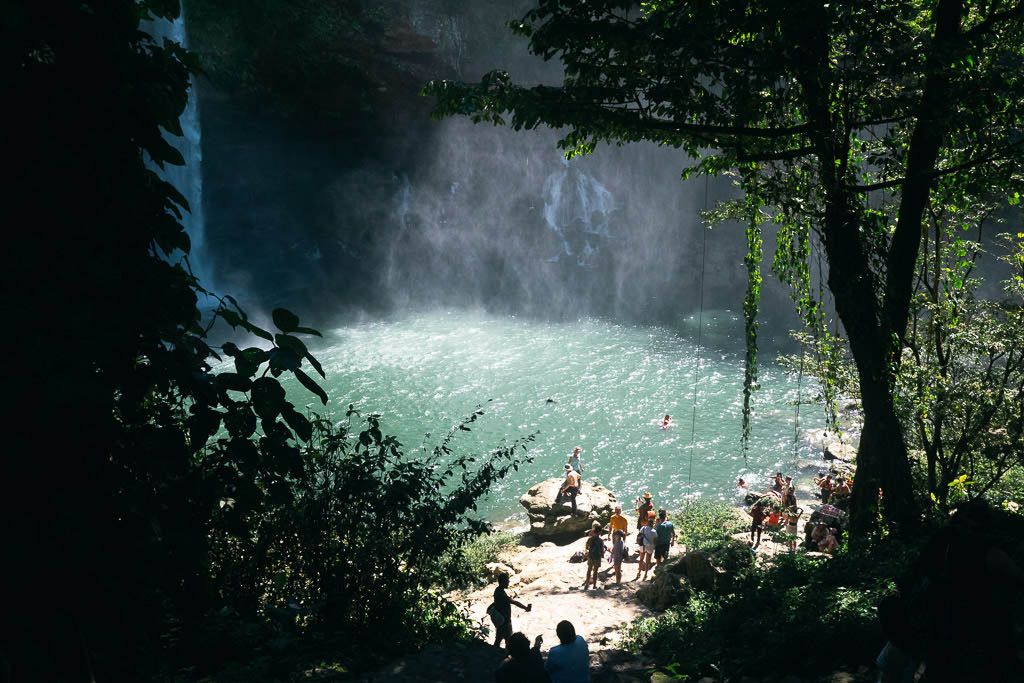
2. Bonampak and Lacandon jungle experience
BEST UNIQUE EXPERIENCE
About a 2,5 hour’s drive east of Palenque is the territory of the Lacandon, a tribe of just over 1000 or so people who dress in white tunics and live in traditional ways.
Visits to the area are strictly limited, so a tour is the perfect way to gain access and learn about the jungle and the Lacandon people.
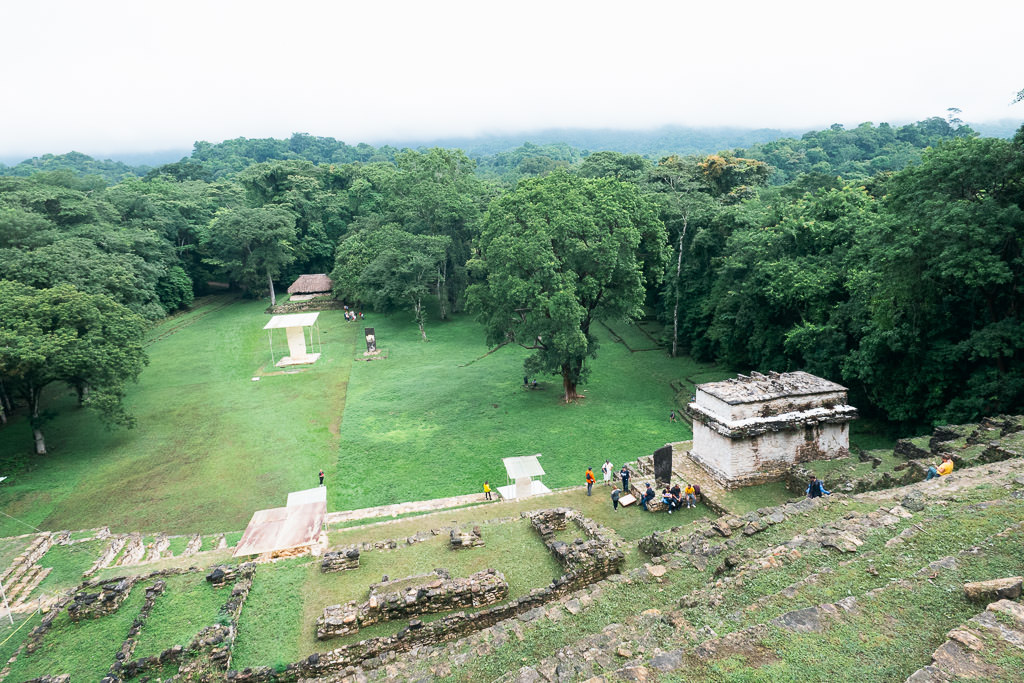
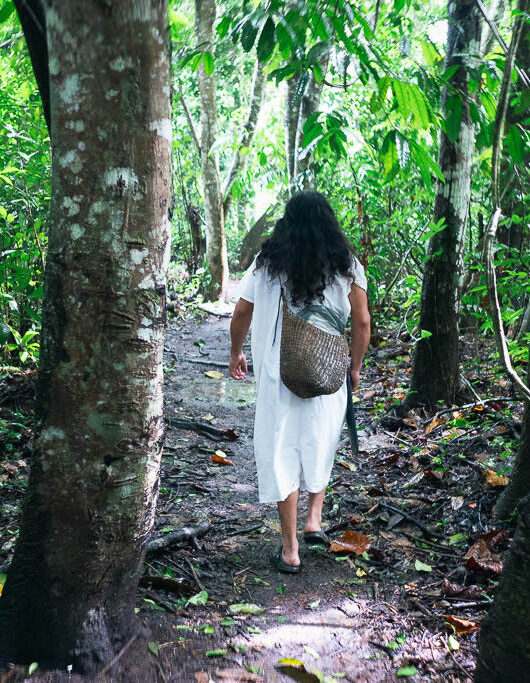
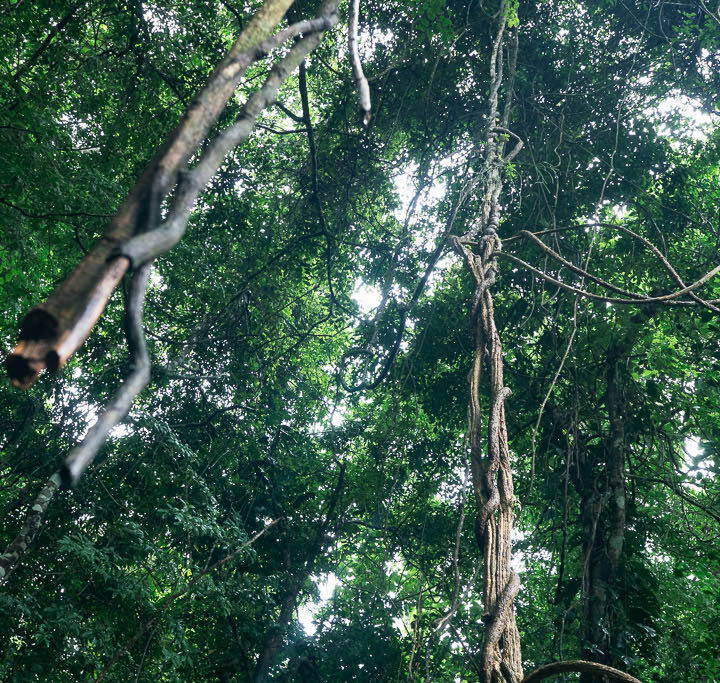
Included is a fascinating jungle hike led by a Lacandon guide as well as a visit to Bonampak. This remote Mayan site is smaller than Palenque, but is unique in its stunningly well-preserved wall paintings. Known as the most elaborate and intact murals of the Mayan world, these frescoes give you a view of the past you won’t get at other sites.
The Bonampak and Lacandon tour has a very early start (around 5 am) but it’s 100% worth it. Because the Palenque ruins get all the attention, relatively few people make the trip to Bonampak, but they are totally different experiences.
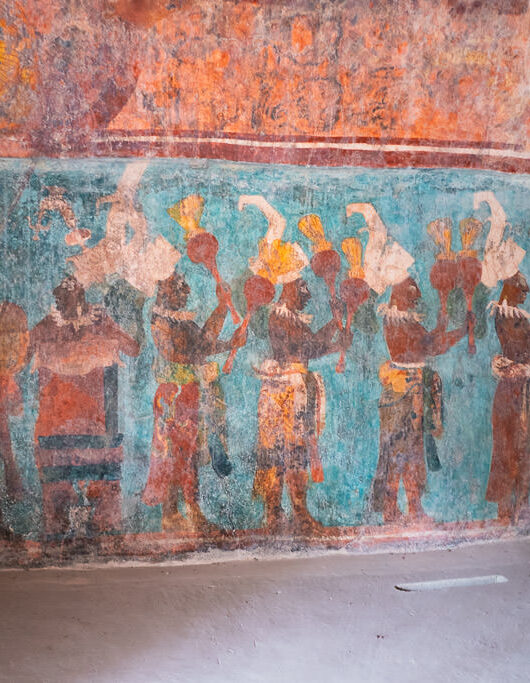
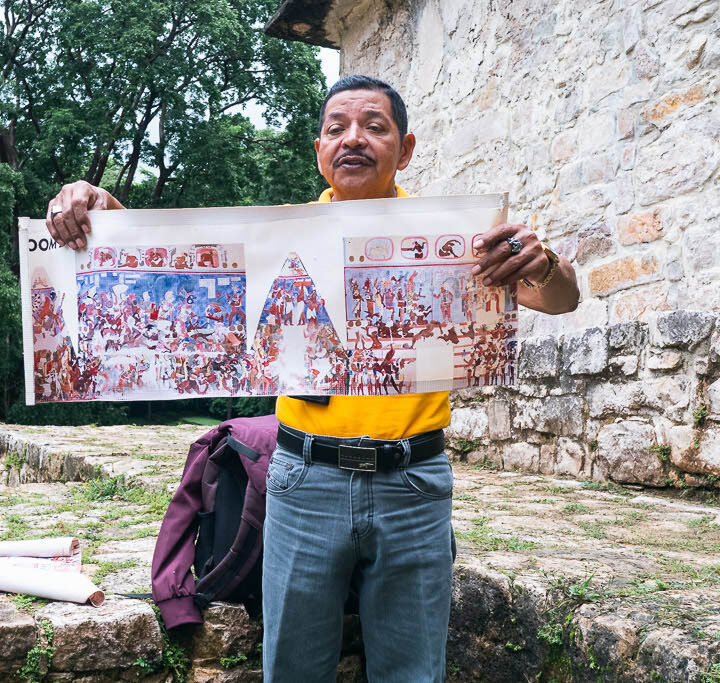
Be advised: A visit to the Mayan ruins of Yaxchilan used to be included in these tours as well, but there is currently an internal conflict preventing access to the site. If you see Yaxchilan advertised in tours, be sure to ask if it’s actually included.
Where to stay
Your most important choice for your Palenque stay is whether to base yourself in the town, or outside it closer to the archeological site.
I have done both and they can result in quite a different stay. Here’s what you should know to make your choice.
Option 1: Staying in eco-resorts near the ruins
The archeological ruins of Palenque are actually located about 9km (5.6 miles) outside of the town. Along the road to the ruins are some scattered eco-lodges and resort villages, ranging from 2-star to 4-star luxury offerings — most of them having swimming pools and straw-roof-style cabañas. Some good options are:
- Hotel Boutique Quinta Chanabnal — luxury
- Hotel La Aldea del Halach Huinic — medium
- Cabañas Kin Balam — low/medium budget
In this area, you’ll be closer to the ruins and you’ll get somewhat of a jungle experience as well. You may wake up in the morning to a chorus of tropical birds and maybe even some distant howler monkeys.
However, you’ll be a little more isolated and have fewer options for restaurants. There are minivans frequently going back and forth between the town and the ruins, so you aren’t exactly stuck there, but chances are you’ll mostly stay within your resort and just eat there as well.
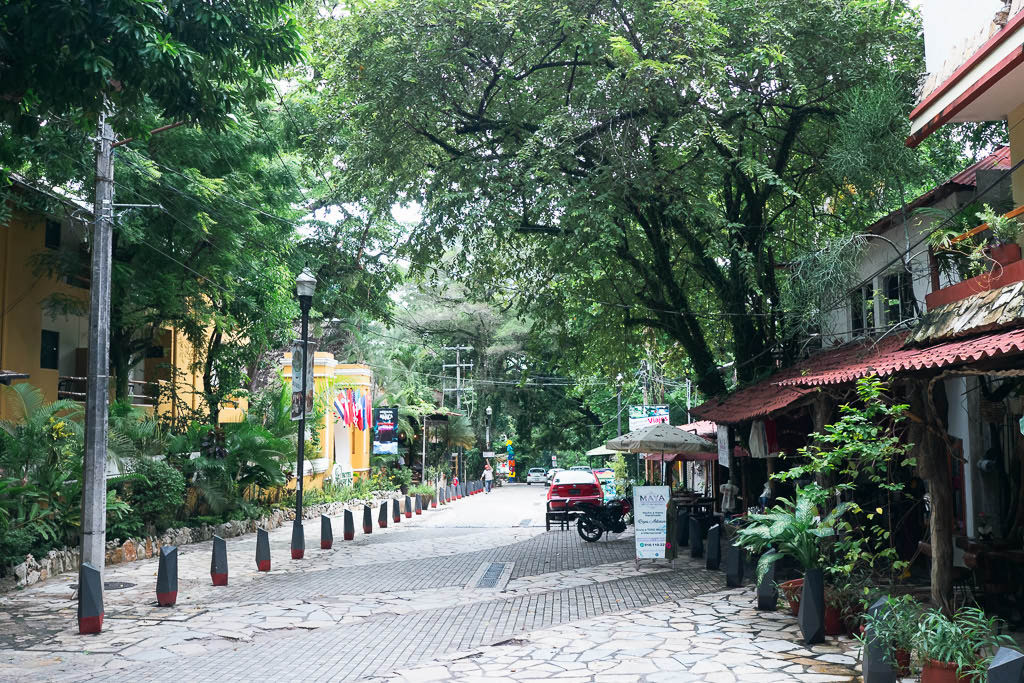
Option 2: Staying in Palenque town
By staying in the town you’re less isolated, have all transportation options at arm’s length, and have more food options too.
The nicest part of Palenque is the small hotel district called La Cañada, a lush area dense with trees that is just a few minutes walk from the ADO bus terminal. A smattering of cafes and restaurants feature wooden platforms with cozy outdoor seating and many atmospheric fairy lights at night.
It’s slightly upscale, welcoming a mix of independent travelers and some tour groups. Here are the best accommodation options:
- Hotel Chablis Palenque — 3-star hotel
- Hotel Maya Tulipanes — 4-star hotel
- Casa Hadassa — cottages with jungle/garden feel
- Casa Janaab — part hotel/hostel, the best option for backpackers
Apart from La Cañada, you can stay in the non-tourist part of town. It is not as charming, but it is an option if you’re a budget traveler looking for an inexpensive posada or local hotel.
Palenque town isn’t filled with colorful heritage buildings or anything, but it still has an above-average pleasantness. The main square is an inviting hub of activity and several restaurants have balcony terraces on the second level. You can find authentic and cheap eats everywhere in this part of town, which is still within walking distance from La Cañada.
Exploring independently
Using your own transport
If you prefer to travel to the sights by yourself, then the options are unfortunately a bit limited.
Firstly, there is no scooter or bike rental in Palenque that I’m aware of. I tried to find one but came up empty. One person said the only place that might have rentals is Ecomundo Park, but I saw only mountain bikes advertised on their site, so I didn’t check in person.
There are also no car rental options I could find, so if you’re trying to organize your own road trip, I’d recommend renting a car in the city of Villahermosa.
Using public transport
Using the local colectivos (shared minivans) it is possible to see some but not all of the local sights. Colectivos are quite ad hoc and only leave when they’ve filled up with passengers, so they can be slower than the tours.
Knowing a bit of Spanish can be helpful, though you can probably still figure things out without it. What’s key is knowing on which street the colectivos will depart, as it’s different for every destination.
Be sure to download the app MAPS.me, which shows icons for the colectivo departure points. The minivans generally leave from street corners within the town. One exception is the minivan service to Ocosingo, Agua Azul, or Misol-Ha, which leaves from an office south of the town’s tourist district. (See location.)
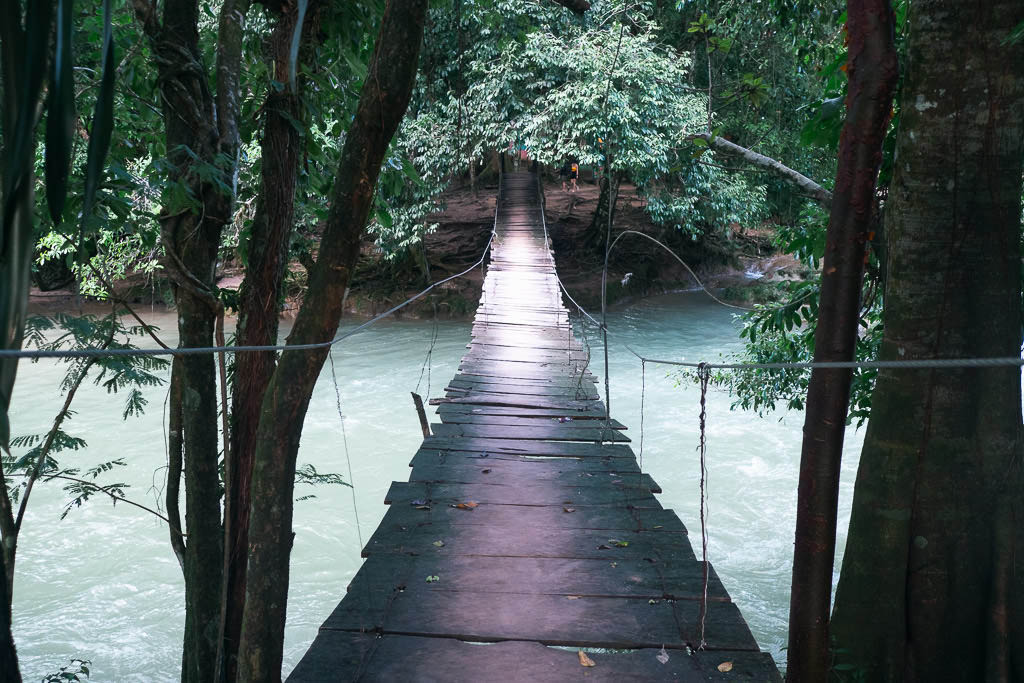
Visiting the ruins independently
It’s not necessary to visit the ruins of Palenque on a guided tour, though having a qualified guide can help you appreciate the history a lot more.
Reaching the ruins by yourself is fairly easy as there are colectivos constantly going back and forth between the town and the ruins. The starting point is in town (see location) but you can also flag them along the way. It’s about a 20-minute drive from town to the archeological park.
You’ll be dropped off at the park facility where you will have to buy two separate tickets. There is a sign saying “entrance 2km” but this is just for the car parking. On foot, it’s maybe just 100m to the first entrance of Palenque, from where a short scenic forest trail connects to the main grounds.
There are many freelance guides offering their services around the entrance, so should you want to have a local guide, you can still arrange one here.
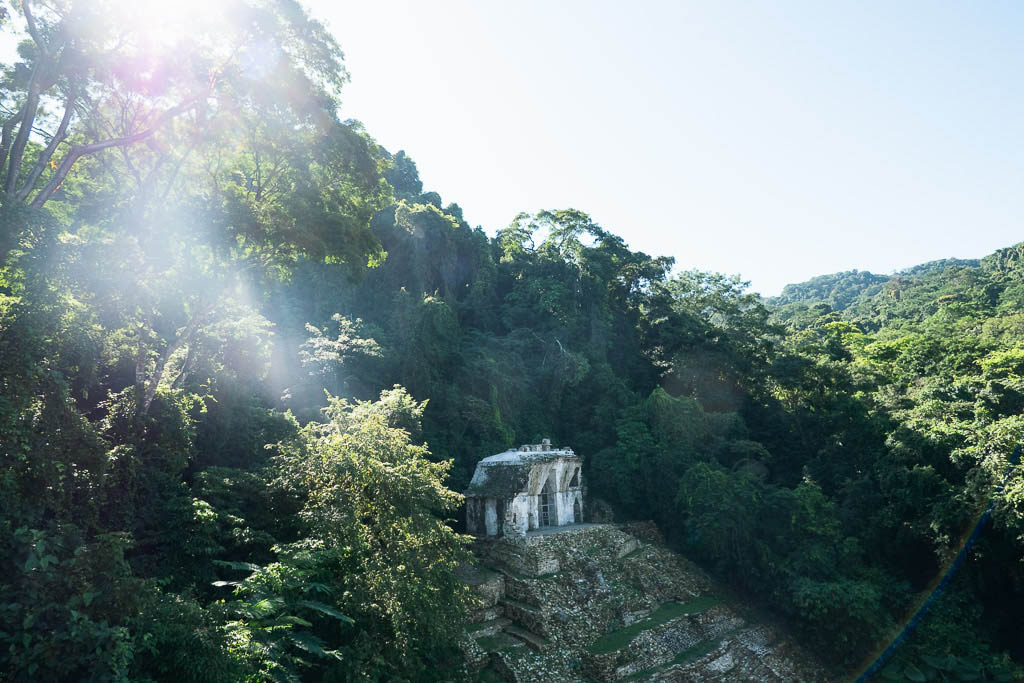
Visiting Roberto Barrios
My number one tip for any backpacker or independent traveler who holds their nose up to any tourist crowds is to go to the Roberto Barrios waterfalls. This place is truly a hidden gem!
The gorgeous waterfalls remain mostly off the Palenque tour circuit and are wonderfully un-commercialized.
My guess as to why it’s so under-visited is that they’re located in the territory of the Zapatistas. This far-left autonomous group is the de facto authority in many parts of Chiapas state. They are often portrayed in a negative light by the government and media, but they are known to be a peaceful group nowadays. (I’ll leave aside the politics, but I’m just saying that you can go there without problems.)
The town of Roberto Barrios feels highly welcoming. You’ll see some of the Zapatistas’ iconic red stars on some of the buildings, which is pretty interesting.
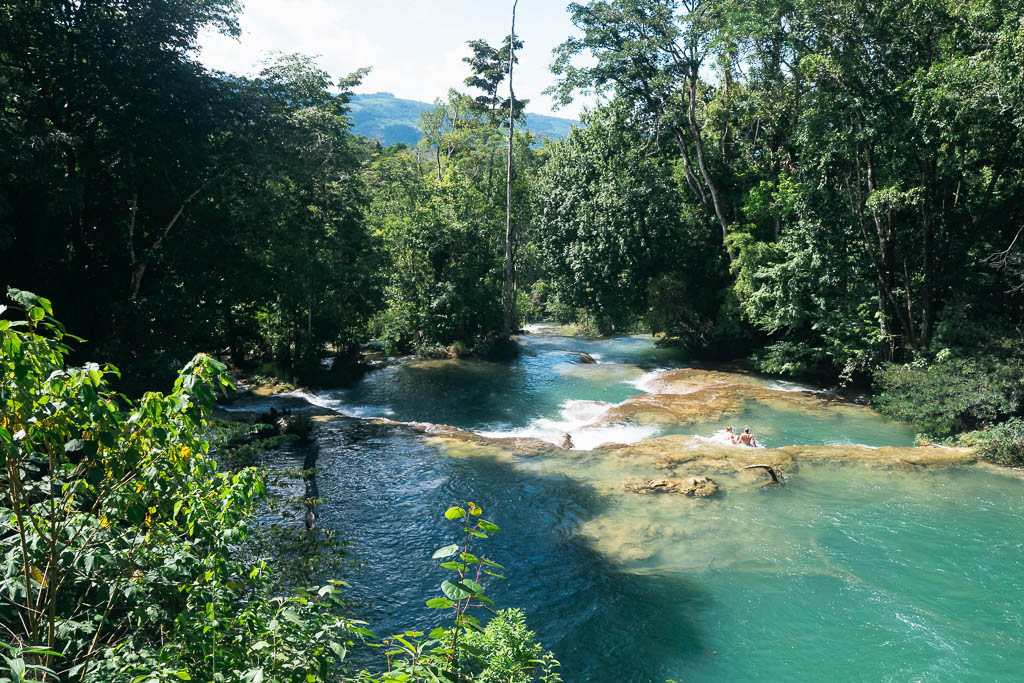
The waterfalls are wide and multi-leveled, similar to the better-known Agua Azul, but with a much more calm and unspoiled environment. I’m quite tempted to throw in a whole bucket’s worth of superlatives right now, but you should probably just visit and judge for yourself. The lower sections of the waterfall are ideal for swimming and you may want to spend a full day or afternoon relaxing in this gorgeous location.
Colectivos leave from the corner of 5e Avenida Norte and Cuarta Pte Norte (see this pin). The ride takes about 45 to 60 minutes and costs 50 pesos one way. There is a 40 peso entrance fee for the waterfalls.
Important: the last colectivo heads back to Palenque at 4pm.
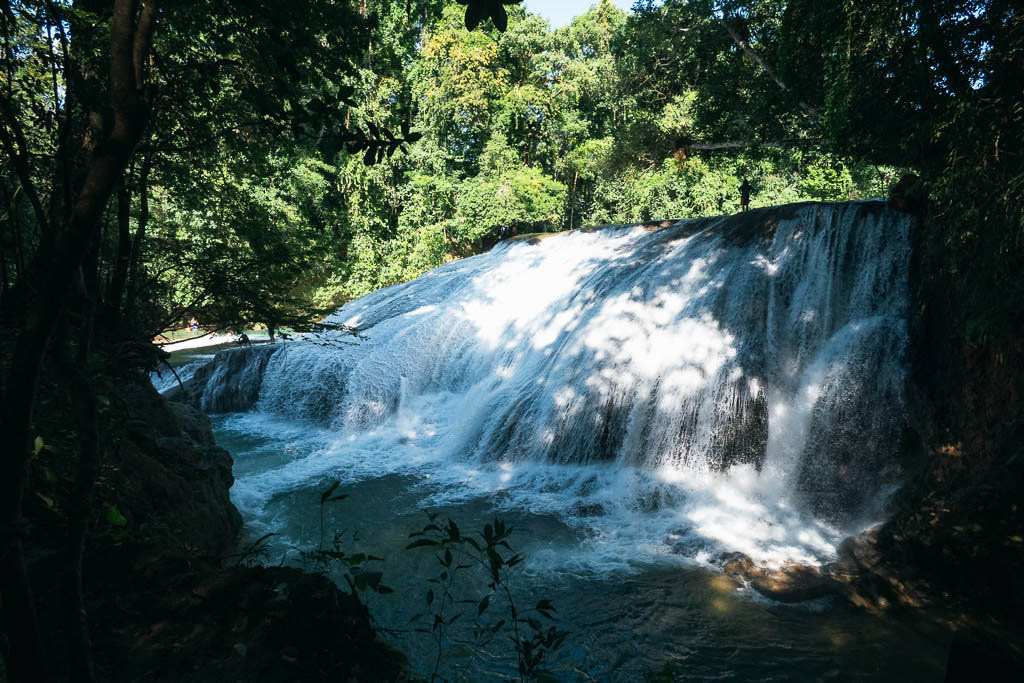
Backpacking Palenque
Curiously, I’ve noticed several travel blogs about Palenque claim that it’s not really visited by backpackers. I wonder… did they go to the same Palenque that I did?
To be clear: yes, Palenque is definitely on the backpacker trail! It’s an almost inevitable stop between Oaxaca and the Yucatan.
Admittedly, there are almost no hostels in Palenque, or at least none that have loads of social events or an on-site bar. Because Palenque itself is more spread out, backpackers are also more spread out, so there is less of a noticeable ‘scene’.
So where to find other backpackers?
Inside the town I highly recommend Casa Janaab — it’s a hotel-managed hostel, without a bar or activities, but you’ll meet people there for sure. It has a pool, a well-equipped kitchen, hammocks, and other amenities. It’s where I stayed personally and I can highly recommend it.
If staying near the ruins, pick some accommodation near El Pachan (map location), which offers nightly entertainment including live music and a fire show. Just don’t stay at the hotel/restaurant called El Pachan itself as it’s quite loud. Nearby Cabañas Kin Balam is a better option, having two dorms and some budget-friendly rooms. I also stayed here personally and thought it was great.
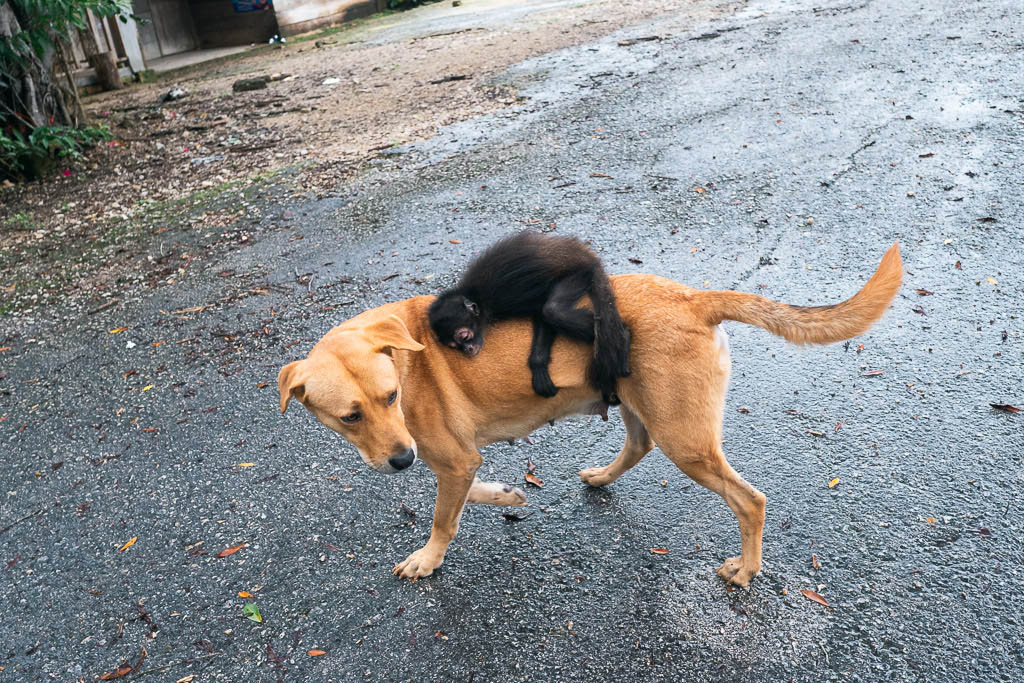
How to get to Palenque
By air: there is NO airport in Palenque. Well, one exists technically, but it’s not been operational since 2020. The nearest airport is Villahermosa where you can catch an ADO airport shuttle direct to Palenque pretty much every hour from 6 am until 10 pm (cost approx. 100 MXN).
By bus: there are multiple ADO or OCC coach buses per day connecting Palenque to Villahermosa (2.5 hours), Mérida (8 hours), Campeche (5 hours), and Cancún (13 hours). There are also one or two daily buses going Mexico City or Oaxaca.
The coach buses to San Cristobal and Tuxtla currently go the long way around, driving all the way via Villahermosa instead of taking the direct route. As a result, they take almost 9 hours instead of 5. The reason for this detour is the frequent roadblocks on the more direct route — an unpredictable element that ADO steers clear of.
By minivan: Tourist minivan services still drive directly between Palenque and San Cristobal, which takes about 5 hours. It’s dependent on the security situation, so inquire locally before you go, but when I did this in 2023 it was safe. You can buy combined tour tickets that take you to Misol-Ha and Agua Azul and then continue onwards to San Cristobal from there (or the reverse). There are also local colectivo services, though in this case you’ll have to change at the halfway point in the town of Ocosingo.
By car: You can probably figure out how to put Palenque in your GPS navigation system, so all I’ll say is that the road between San Cristobal and Palenque often features Zapatista roadblocks. Mostly this doesn’t involve anything scary, just some locals demanding a small toll fee, but I should mention there were some bigger incidents along this route a few years ago. You can check the app iOverlander where overland travelers can leave messages and warnings as to the current situation.
By train: if all goes according to plan, starting in 2024 Palenque will be connected to the Yucatan Peninsula via the new Maya Train.
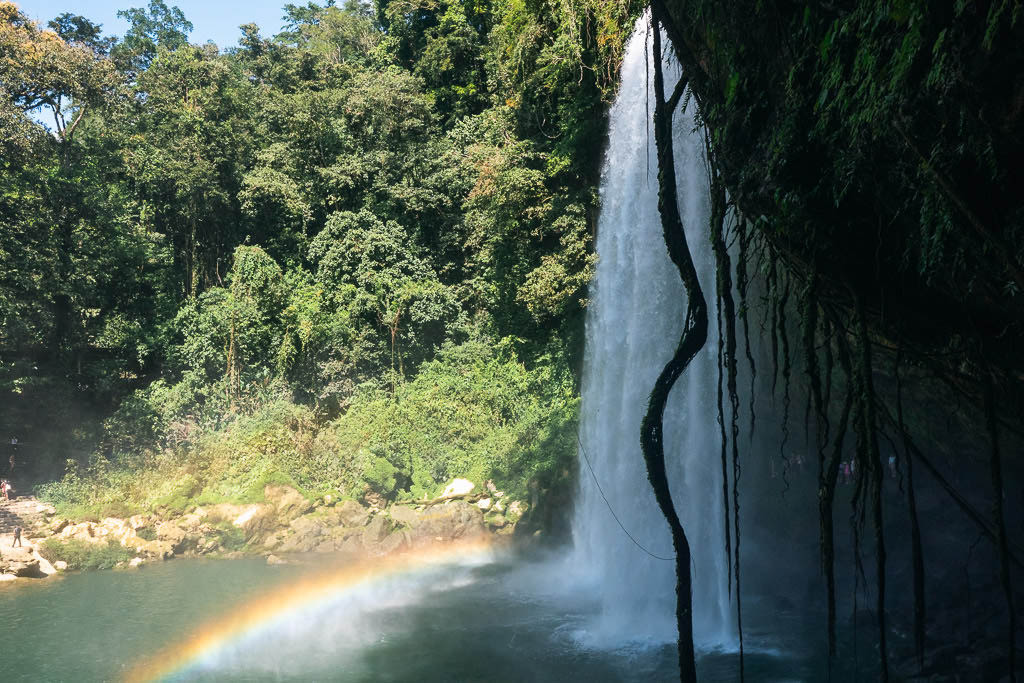
Further travel in Chiapas
Some Palenque blogs seem to mindlessly list any tour at all departing from the town, including to other far-away places in Chiapas like the town of San Cristobal. Personally, I don’t think this makes sense!
Getting to San Cristobal takes (at best) 5 hours via windy mountain roads. If you’re doing a day tour from Palenque, you’ll have to get up at 4 a.m., sit in a cramped minivan for ages, and have only a bit of time to spend in San Cristobal. You won’t be back in Palenque until around midnight.
There are many things to see and do in San Cristobal, so it’s worth spending two nights there at the minimum, rather than only seeing it in a flash after a very exhausting journey.
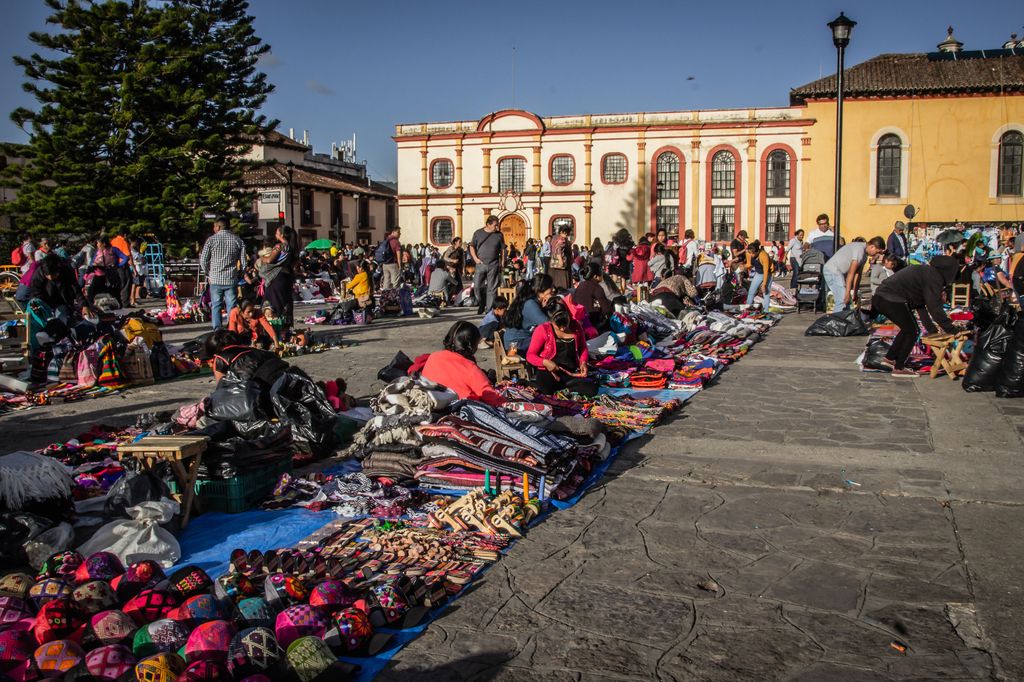
A day trip from San Cristobal to Palenque might make a bit more sense. That way you’ll use the most charming of the two towns as your base, and still get to tick the ruins and some waterfalls off your list. It’ll be a long day, but potentially worth it, depending on the circumstances and how many days you have available.
If you’re traveling around Chiapas State for a while then you’ll of course have much more flexibility to stay closer to the different sights. My favorite town to stay in is San Cristobal, followed by Palenque for its many sites nearby. I’m also quite a fan of underrated Comitán. The capital, Tuxtla Gutiérrez, is much less appealing, so I recommend it only as a transit place.
Palenque also links up very well with the Yucatan Peninsula — especially Campeche State, which is just an hour away. Even if you’re not planning to see other areas of Chiapas State, you can make a quick detour to Palenque from the Yucatan.
Some links may be affiliate links, meaning I may earn commission from products or services I recommend. For more, see site policies.
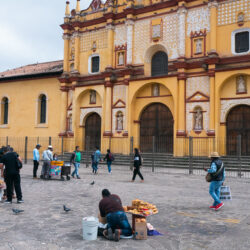
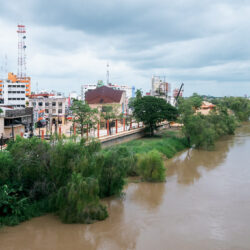




I wonder if you recall which travel company you went with to Bonampak and Lancadon. I can’t find a single one that gives me only those two places without other stuff I’m less interested in visiting. Thank you!
I booked it through GetYourGuide, not sure of the name of the company!